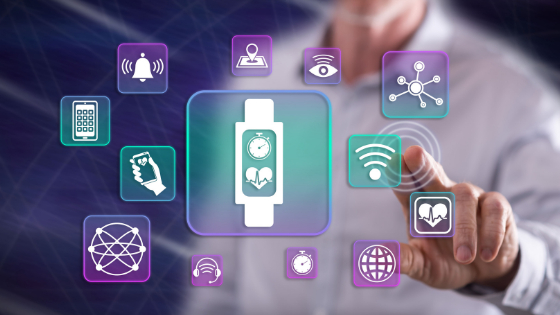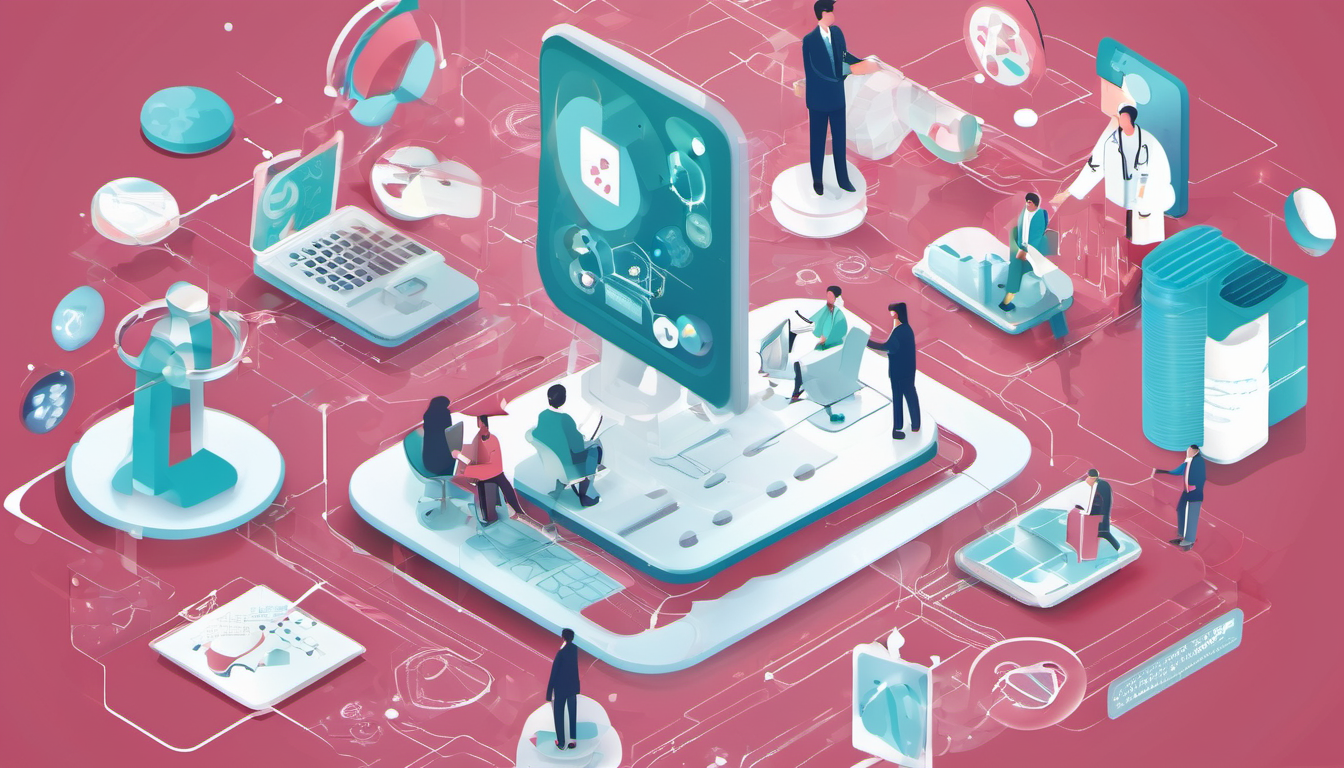Wearable technology has become increasingly popular in recent years, particularly in healthcare. These devices can help individuals track their fitness goals, monitor their health, and manage chronic conditions. While wearables have the potential to revolutionize healthcare, they also bring new challenges and complexities to an already complicated industry.
The Benefits of Wearables in Healthcare
Monitoring and managing chronic conditions
Wearable devices can be incredibly useful for individuals with chronic conditions, such as diabetes or heart disease. These devices can monitor vital signs and provide continuous data to healthcare providers. With this information, healthcare providers can detect early warning signs and adjust treatment plans as needed. Wearables can also help patients manage their conditions by reminding them to take medication, monitoring their activity levels, and providing personalized recommendations.
Increasing patient engagement
Wearable technology can help increase patient engagement in their own healthcare. By tracking their progress and seeing measurable results, patients can stay motivated and engaged in their health and wellness goals. Wearables can also provide patients with valuable information about their health that they may not have access to otherwise, such as sleep patterns and stress levels.
Facilitating remote patient monitoring
One of the biggest advantages of wearable technology is that it allows for remote patient monitoring. This means that healthcare providers can monitor patients from a distance, without requiring them to come into the clinic or hospital. Remote patient monitoring can be particularly useful for individuals who live in rural or remote areas, or for patients who have mobility issues.
Improved accuracy in data collection
Wearables can provide accurate, real-time data about a patient’s health and wellness. This can be especially valuable for individuals with chronic conditions, as it can help healthcare providers detect early warning signs and adjust treatment plans as needed. Wearables can also help eliminate the human error that can occur when patients manually record their health data.
The Challenges of Wearables in Healthcare
Interoperability challenges
Interoperability refers to the ability of different devices and systems to communicate and exchange data. In healthcare, interoperability is essential for ensuring that patient data can be shared between different healthcare providers and systems. However, interoperability is still a major challenge for wearable technology in healthcare. Many wearable devices use different data formats, which can make it difficult to integrate them into existing healthcare systems.
Data transaction challenges
Data transaction refers to the process of transferring data from one system to another. In healthcare, data transactions are critical for ensuring that patient data is accurate and up-to-date. However, data transaction challenges can arise when wearable devices do not communicate effectively with existing healthcare systems. This can result in data inaccuracies, delays, and other issues.

Data security and privacy challenges
Data security and privacy are major concerns in healthcare, and wearable technology only adds another layer of complexity to these issues. Wearable devices collect and store sensitive patient data, which can be vulnerable to hacking and other cyber threats. In addition, patients may be hesitant to use wearable devices if they are concerned about their privacy and the security of their data.
Regulatory challenges
Wearable technology is subject to a number of regulatory requirements, particularly in healthcare. These requirements can vary depending on the type of device and the intended use. For example, medical-grade wearables must meet certain safety and efficacy standards before they can be used in clinical settings. These regulatory challenges can be a barrier to entry for wearable technology companies, particularly smaller startups.
Interoperability Challenges
The importance of interoperability in healthcare
Interoperability is essential for ensuring that patient data can be shared between different healthcare providers and systems. Without interoperability, patient data can become siloed and fragmented, which can lead to inaccuracies and delays in treatment. Interoperability also allows healthcare providers to make more informed decisions about patient care.
The current state of interoperability in wearables
Interoperability is still a major challenge for wearable technology in healthcare. Many wearable devices use different data formats, which can make it difficult to
integrate them into existing healthcare systems. In addition, some wearable devices may not be compatible with certain electronic health record (EHR) systems, further complicating the data exchange process. This can result in data silos and fragmented patient records.
The role of standards in improving interoperability
To address interoperability challenges, there have been efforts to establish standards for wearable technology in healthcare. These standards aim to create a common language for data exchange and promote interoperability between different systems.
Examples of standards in healthcare include Health Level Seven (HL7) and Fast Healthcare Interoperability Resources (FHIR). By establishing these standards, it becomes easier for different systems to communicate and share data.
The need for collaboration and cooperation
Improving interoperability in healthcare requires collaboration and cooperation between different stakeholders, including healthcare providers, technology companies, and regulatory bodies. These stakeholders need to work together to establish common standards and protocols for data exchange. Collaboration can also help to identify and address interoperability challenges in a timely and effective manner.
Data Transaction Challenges
The importance of data transaction in healthcare
Data transaction is critical for ensuring that patient data is accurate and up-to-date. This is particularly important in healthcare, where accurate and timely data can mean the difference between life and death. Data transaction is also essential for facilitating collaboration between different healthcare providers and systems.
The current state of data transaction in wearables
Data transaction challenges can arise when wearable devices do not communicate effectively with existing healthcare systems. For example, wearable devices may not be able to transfer data in real-time, which can result in delays in treatment. In addition, wearable devices may not be able to integrate with certain EHR systems, which can lead to data silos and fragmented patient records.
The role of technology in improving data transaction
Technology can play a key role in improving data transaction in healthcare. For example, cloud-based platforms can provide a centralized location for storing and accessing patient data, making it easier for healthcare providers to collaborate and share data. In addition, advanced analytics tools can help healthcare providers make sense of large amounts of data, identifying patterns and trends that can inform treatment decisions.
The need for data standardization and governance
To address data transaction challenges, there is a need for data standardization and governance. This means establishing common standards for data exchange and ensuring that data is accurate and secure. It also means establishing protocols for data governance, such as who has access to patient data and under what circumstances.
Data Security and Privacy Challenges
The importance of data security and privacy in healthcare
Data security and privacy are critical in healthcare, where sensitive patient data is being collected and stored. In addition to protecting patient privacy, data security is essential for preventing data breaches and other cyber threats.
The current state of data security and privacy in wearables
Wearable devices collect and store sensitive patient data, which can be vulnerable to hacking and other cyber threats. In addition, patients may be hesitant to use wearable devices if they are concerned about their privacy and the security of their data. This can limit the potential benefits of wearable technology in healthcare.
The role of encryption and authentication in improving data security
Encryption and authentication can play a key role in improving data security in healthcare. Encryption can protect data from being intercepted or accessed by unauthorized parties, while authentication can ensure that only authorized parties have access to patient data. These technologies can help prevent data breaches and other cyber threats.
The need for regulatory compliance and best practices
To address data security and privacy challenges, wearable technology companies must comply with regulatory requirements and best practices for data security. This means implementing appropriate security measures, such as encryption and authentication, and ensuring that patient data is stored securely and accessed only by authorized parties.
In addition, wearable technology companies must comply with data privacy regulations such as the General Data Protection Regulation (GDPR) and the Health Insurance Portability and Accountability Act (HIPAA) in the US. Failure to comply with these regulations can result in significant fines and damage to the company’s reputation.
The importance of patient education
Patient education is crucial in addressing data security and privacy concerns related to wearable technology. Patients must be informed about how their data is being collected, stored, and used, and what measures are in place to protect their privacy and security. Education can also help patients understand the potential benefits of wearable technology and encourage them to use it as part of their healthcare regimen.
Conclusion
Wearable technology has the potential to revolutionize healthcare by providing patients with real-time health data and improving treatment outcomes. However, the implementation of wearable technology in healthcare also presents challenges related to interoperability, data transaction, and data security and privacy. Addressing these challenges requires collaboration and cooperation between different stakeholders, as well as the establishment of common standards and protocols for data exchange. By addressing these challenges, wearable technology can become an integral part of healthcare and improve patient outcomes.
In conclusion, while wearables hold tremendous promise for the future of healthcare, there are several challenges that must be addressed. Interoperability and data transaction are among the top challenges facing organizations that implement wearable technology solutions. To fully realize the potential of wearables in healthcare, organizations must work to address these challenges while also ensuring that patient privacy and data security are protected.
If you want to get the best digital health news, you can visit our website, Digital Salutem. We will update digital health news every week, so please keep in contact with us every week! If you have any feedback or suggestion about patient care, wearables, digital health news, or anything, please don’t hesitate to send an email to us!
Check our YouTube Channel, Healthcare Uncomplicated. To find out more about how we can help you with your Digital Healthcare Transformation, Healthcare organizational growth, or Healthcare brand positioning via our Partner as a Solution service, please get in touch via phone at +44 (0)1273 458590 or via e-mail: info@digitalsalutem.com





